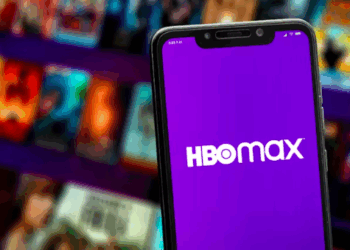Move over Millennials, Gen Zalpha is here!
The world of marketing is constantly changing. As the torch passed from Millennials to Gen Z and now to the fusion of Gen Z and Alpha, known as Gen Zalpha, marketers are faced with a new set of challenges and opportunities, particularly regarding the creative process and how it ultimately impacts purchasing power and decision making.
Gen Zalpha is the bridging generation encompassing Generation Z and Generation Alpha – those born after 1996. They embody characteristics and experiences from both generations, making them a unique cohort in terms of their digital fluency and diverse perspectives.
Gen Zalpha are the true digital natives, having grown up in a world where smartphones, social media, and digital devices are their playground.
It is crucial for marketers to know what to keep in mind when managing the juggling act of trying to navigate the ever-changing creative process while trying to connect with the next generation of consumers… Gen Zalpha.
Why should brands and marketers care about Gen Zalpha?
Gen Zalpha holds massive spending power. It extends beyond personal purchase decisions to influencing major purchases made by their parents and that of the general household.
My advice to brand managers is to pay close attention to this demographic right now, as their habits and preferences influence not just the future, but also the present. Besides this, Gen Zalpha’s total immersion in social media makes them a prime target for influencer marketing campaigns.
They seek authenticity, social responsibility, and personalised experiences from brands, making influencer collaborations an effective way to connect with them on a deeper level.
As the former vice-chair of the MMA SA’s Youth Development Board, it was – and still is – our mission to enlighten marketers as to how to reach this generation.
To recap: Gen Zalpha represents a major force in the marketing landscape, driven by their digital fluency, diverse perspectives, and significant spending power. Brands that understand and align with the values and preferences of Gen Zalpha stand to thrive in this new landscape.
Benchmark study paves the way
MMA Global recently conducted their first benchmark study on the state of the creative process in marketing, conducted in partnership with Canva and based on the input of close to 100 senior creative decision makers.
The goal of the study was to provide an insightful guide for marketers looking to refine their approaches and drive increased value with their creative efforts.
The study dives into key insights including the growing importance of creative, the existing complexities in the creative process, finding the balance between managing existing systems while navigating future disruptions, and having to continue to show return on investment at a time when required investment in creative for success is expected to rise.
It also points out the challenges facing marketers, such as the myriad constraints marketers have to deal with to optimise their strategies, goals, budgets, and creative efforts towards achieving strong sales and brand outcome.
It takes cognisance of how many marketers are frustrated by the degree to which the actual process gets in the way, and the increased difficulty of aligning across departments, regions, risk levels and priorities.
This provides much food for thought.
Marketing creativity is at a pivotal moment
This is a key finding of the MMA study, with 77% of marketers declaring creative efforts to be more vital than ever and 68% indicating it will be more important in the future, particularly in social media, online video, and online customer experiences.
This heightened focus on creative is not just a trend; it’s a necessity driven by the rapid advancements in marketing technologies and deep changes in the media ecosystem.
In fact, 80% of marketers polled see the rise of data and analytics as a significant boon, enhancing their ability to craft compelling and effective creative strategies and to revolutionize creative processes.
So, where should marketers focus their efforts when trying to reach an audience like Gen Zalpha?
Mastery of visual communication and impactful experiences would be at the top of my list, as streaming video content accounts for around 40% of Generation Z’s digital time and 81% of Gen Z’s discover new products and services through social media.
This then puts marketers in a position where there has to be an increased spend in creative efforts. Plus, with the speed at which Gen Zalpha’s digital worlds continuously evolve and move, it’s just as important to have systems and processes in place that allow you to create at the same pace.
This is no mean feat.
In-sourcing creativity
The MMA study shows that there is a notable shift towards in-house creative functions – in fact, on average, a net one-third of marketers is expected to increase its in-house creative operations, seeking greater transparency, strategic alignment and cost efficiency.
In-sourcing creative work is increasingly seen as a superior process, offering greater transparency, better alignment with strategy, and lower costs. This approach is particularly preferred for social media, content, websites, apps, and to some extent, display advertising, with many marketers continuing to rely on external agencies for TV and video production.
This is a move then that more marketers should seriously consider, especially if trying to keep up with Gen Zalpha.
Seventy-seven percent of marketers polled agree that leveraging social media, online video, online product and customer experiences is the way to drive desirability and purchases with this next generation of consumers.
This is a generation that is living in fragmented digital worlds, and, now more than ever, it is important for brands and marketers to identify the right channels and platforms, create the most attractive content, and tailor strategies to meet their consumers evolving needs.
This begins by being clear on the role of each channel in your strategy and doubling down on it. For example, marketers can leverage Instagram for elevated experiential storytelling, and TikTok for everyday snackable content that’s created for your ‘tribe’ and ‘community’.
Getting the experiences right
According to a recent McKinsey consumer report, 71% of consumers expect customised experiences — and companies that get personalisation right generate 40% more revenue.
All this plays into the importance of the integration of tools and technologies, including Gen AI, that would go on to maximise efficiency, collaboration and creation of creative that allows for personalised experiences for consumers.
This naturally leads to additional pressure being put on the current creative processes. With 94% of marketers saying the creative process is more complex now than it was five years ago, due to complexities including managing resources and budgets, maintaining consistency of creative output, and managing systems and processes, this has a knock-on effect, making alignment and consistency key challenges.
At this point, it is important that both C-suite and marketers understand that if the budget allocation and investment doesn’t align with strategic intent, creative marketing efforts will fail.
Making the deep connection
Alignment of creative strategy and consistency of it across channels should be a priority when trying to build credibility and a deeper emotional connection with this younger consumer, as they’re very quick to move past brands with a disconnect between what they say and what they do.
This is typically seen through once off campaigns and collaborations, done in the hopes of being seen as relevant, instead of actually being relevant to them.
Which is why it’s important to understand that brand relevancy is only built through consistency – consistency in messaging, consistency in visibility through creative, and presence on relevant platforms and channels.
Quantifying the ROI of creative ads is another major challenge that is deemed to become more critical as marketing continues to be disrupted. While marketers feel that their creative work adds value, only 36% are satisfied with their ability to measure its ROI accurately.
Though 34.2% of the MMA’s surveyed marketers rarely or never measure the return on their marketing investment, ROI is the top effectiveness metric demanded by C-Suite. Yet, marketers don’t feel confident in their ability to dissect the actual value of creative and its impact on economic results.
Will Gen Zalpha be the generation that forces us to reconsider the things we measure in order to prove ROI?
As the architects of future innovations and trends, Gen Zalpha are not just consumers but change makers, shaping the future of marketing as we know it.
By leveraging community building influencer marketing, embracing authenticity, consistency and exploring platforms relevant to your brand and industry, brands can make deeper connections with Gen Zalpha.
Winning the hearts and loyalty of this generation is the turnkey to unlocking their spending power.
*Gen Alpha: born from 2010 to 2024.
*Gen Z: BORN from 1996 to 2010

Also known as The Blck Sparrow, Anesu Malisa, Samsung Africa’s Gen Z marketing lead, and the former vice-chair of the MMA SA Youth Development Board, is a multi-hyphenate creative, who loves to express himself through music, TikTok comedy, scriptwriting, and more. With prior experience as a youth mentor, content creator and a tech start-up founder, this cultivated Malisa’s deep love and passion for technology, storytelling, connecting brands to Gen Z and, most importantly, raising the next generation of creative innovators.














